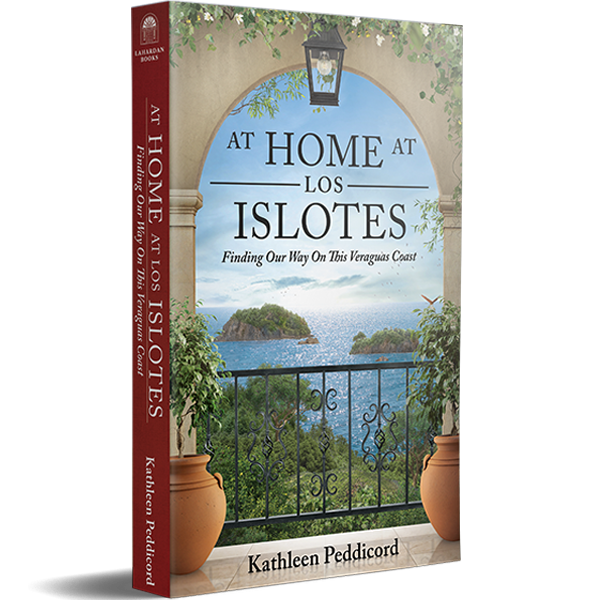In 2008, Kathleen Peddicord and her husband Lief Simon set out in search of a legacy-level investment play in Panama. They targeted the frontier western coast of the Azuero Peninsula, in the country’s Veraguas Province. The finca known as Los Islotes was its jewel. Pulling the trigger on its purchase was a bolder move than the couple realized. The decision set them on a course that brought them face to face with the real Panama—the good, the bad, and the sometimes very ugly—while connecting them with a lost world where the way of life was little changed from its centuries-old indigenous roots. Kathleen and Lief’s plan to reinvent that reality would lead to both the biggest challenges and the greatest rewards of their lives.
“It was my third machete.
“My first was in Santiago where I watched a man use one to shave his chest.
“He sat in a wooden rocking chair on his front porch at about 10:00 o’clock in the morning, his red checkered shirt unbuttoned and open as he scraped the blade across his belly.
“My second machete was at Panama Jack’s, the tiki bar on our property at Los Islotes. My husband, Lief, used one to cut the head off a snake.
“It was late and most of the staff of our publishing business we’d invited to enjoy themselves at our beach were good and drunk. We were sunburned and tired and the evening was winding down when Valentine, our marketing director, pulled a cooler over to a table to sit on. Underneath was a long black snake coiled around itself. Exposed, it stretched out and darted across the floor.
“Everyone screamed.
“We were all in swimsuits and barefoot. We jumped up on chairs, onto the bar. Lief ran to the Prado and returned with the machete he keeps in the back. In a stroke, he decapitated the intruder.
“He picked up the severed head with his blade and flung it as far as he could into the darkness. He knew better than to leave it where it lay. Even separated from its body, the head can still bite.
“Now our neighbor Roberta was swinging machete number three above her head while shouting in Spanish I couldn’t follow.
“From the cab of our project manager Dalys’ pick-up truck, Lief, Dalys, and I watched as five guys from our construction crew huddled together a meter away.
“They stood rigid and straight, whispering to each other but never taking their eyes off Roberta. Every one of them had a good three inches and fifty pounds on the woman losing her mind in the middle of our dirt road, but they were clearly afraid.
“‘What is she saying?’ I asked Dalys.
“I’ve been spending time in Latin America for four decades and have lived in Panama for fifteen years. I should speak better Spanish than I do. Dalys is a local. I’ve let her become a crutch.
“‘She’s yelling at them to get off her land, Señora Kathleen. She’s saying that if they don’t stop work on this fence, they will regret it.’
“We’ve been feuding with Roberta over this fence for two years. We believe it’s our right to build it on land we own. She disagrees. I knew the situation was coming to a head, but I never imagined it would escalate to physical violence.
“What could the woman be thinking?”
So begins my latest book, “At Home At Los Islotes,” the behind-the-scenes story of Lief and my experiences in Panama these past two-and-a-half decades.
It’s the ultimate insider’s guide to the real Panama—the good, the bad, and the maddening.”




